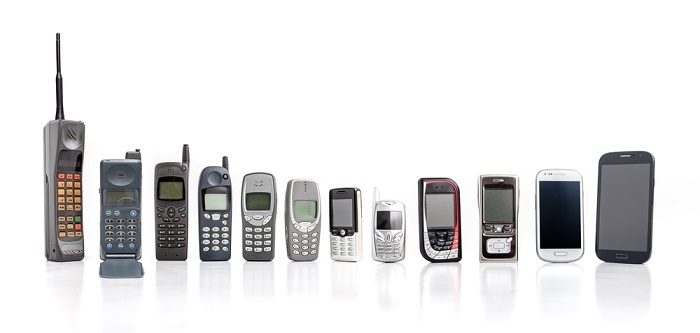
 Data Structure
Data Structure Networking
Networking RDBMS
RDBMS Operating System
Operating System Java
Java MS Excel
MS Excel iOS
iOS HTML
HTML CSS
CSS Android
Android Python
Python C Programming
C Programming C++
C++ C#
C# MongoDB
MongoDB MySQL
MySQL Javascript
Javascript PHP
PHP
- Selected Reading
- UPSC IAS Exams Notes
- Developer's Best Practices
- Questions and Answers
- Effective Resume Writing
- HR Interview Questions
- Computer Glossary
- Who is Who
Marketing Strategy at Different Levels of Product Life Cycle
Marketing strategy is a tool or we can say a technique that a business applies at different phases of a product life cycle. The primary goal of a marketing strategy is to be a key player or if not a key player to get an appropriate rate of return against the cost incurred to establish the business.
What is a Product Life Cycle?
It is a journey of the product right from its birth in the associated market till its decline or death or termination from the marketplace.

Introduction Phase
Introduction is the first stage of a product life cycle. It's like the birth of the product in the relevant market. It is like the establishment of a business for the first time in the marketplace.
Key features seen during the Introduction phase
The firm has to bear lots of losses because of its a newness to the industry. For the establishment of the business, there is a lot of investment that is needed. Once these investments are done it's really not sure whether it will take its speed or diminish. If it takes its speed, then also it takes time. It takes time for the market penetration.
Sales are very low because of their newness to the industry.
Profit is negative because you are trying to compensate for the cost which you bear.
There are only a few competitors in your domain.
Marketing strategy in the Introduction phase
There are lots of advertising and promotion done during the phase because the business wants their product to be in the head of every customer.
The investment is huge during this phase.
There is an increase no in trials during this phase.
There are lots of risks during the phase.
Businesses give lots of freebies and discounts to the customers to get their product sale and popularize.
Growth Phase
Growth is a stage where the product bloom and get accepted with open arms in the market. The sales bloom as a result the profit blooms. In this stage, the product is actually growing its market share. This is the most progressive and satisfying stage of any product.
Key features of the Growth phase
Increasing sales
Increasing profit
Increasing Reputation and brand name
New competitors appear
Marketing strategy during the Growth phase
There is a cut down on the advertisement and promotion cost.
The firm now takes the decision to investment.
The firm now takes the decision to investment.
The achievement is really reaped out during this phase.
Maturity
The product gets mature enough. Now it's a developed product. This product has now generated as much revenue as it can. It's now a well-known brand. It has now to do everything to get into the fight with the remaining competitors.
Key features of maturity
There is a saturation.
There are declining profit margins.
The product has well-developed developed and standardized features.
There is an industry shake-out because lots of competitors come into existence.
Marketing strategy during maturity
To fight for its relevant acceptance, the business spends a lot on its establishment.
The firm now makes plans for how to milk up the total profit generated by the firm.
Decline
The product now has become obsolete or its validity has now vanished. There are lot many players now in the market available for its replacement. Technology has made many products go into the decline phase because of the advent of too many technological players in the market.
Key features of the decline phase
Product is displaced by substitute products.
Profitability falls
Only a few key players survive in the market.
Marketing strategy during the decline
The firm either takes the divestment or retrenchment strategy.
The main focus of the business is to recover everything from the entire product.
Now let's understand the strategies mentioned above with the example of the Nokia

Introduction of Nokia
Is known by very few no people that Nokia started by manufacturing cables l, pulp, and rubber in 1865.
In 1992 it established its Digi handheld GSM phone Nokia 1011. The sale was less. So after some time, it did both GSM and CDMA phones
Growth of Nokia
Nokia did a considerable level of research and development to launch its first phone without an antenna, Nokia 3210 in 1999. Near about 160 million units of it were sold proving it to be one of the most popular and successful phones in the history of mobile phones.
Maturity of Nokia
During this state, it was facing lots of competitors from I phone and Samsung. It launched a lot of variety of touchscreen models which also it got huge success. It tried its level best to be in the market and yes it did. It gained lots of profit.
Decline of Nokia
Because of incorrect product design and considering Windows as its operating system, it leads to a decline.
Every product during a certain span declines but there is an exception to it also. Coca-Cola is one exception because it has established its pertinent position even after a series of decades. Let's look at the key highlights
It was transferred to every state of the country by 1895.
It got more than 50 percent of the market share in 1948.
It converted into a complete beverage company in the late 90s.
Strategies took by coca cola to be a key player
It started with a clear note and experimented approach
Its logo and the brand name have a unique uniqueness
The product design is relevant and different from others
Price didn't change for 70 complete years
Word-of-mouth advertising was a key point of success
Conclusion
Each and every product goes through the phases of the product life cycle. The span of these phases is different for different products. Some products maintain to be in the era for centuries while some diminish in a decade. This span depends on the marketing strategy taken by the businesses to a great extent.

